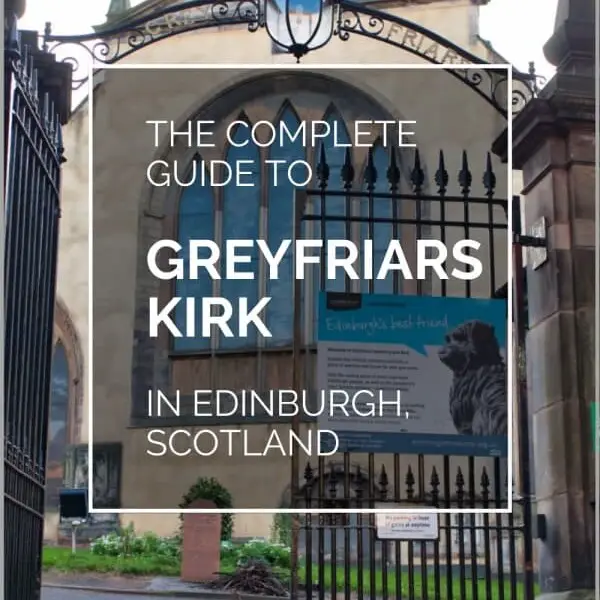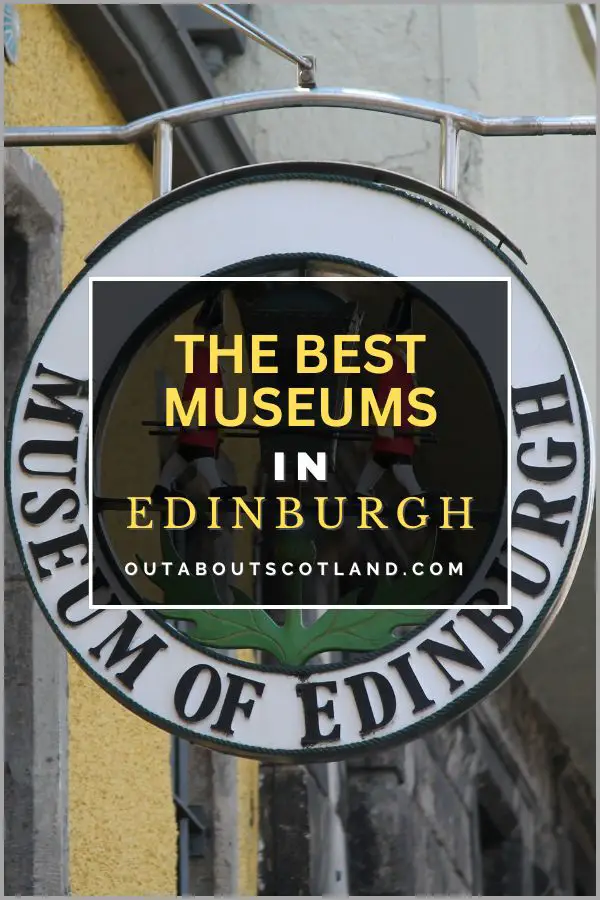Greyfriars Kirk, located in Edinburgh’s Old Town, is a prominent historical and cultural site. It was established in 1620 and is named after an earlier Franciscan friary on the site that was dissolved in 1559. The architecture of Greyfriars Kirk is a beautiful blend of Gothic and classical styles. The church is famous for its stunning stained glass windows and the historic Greyfriars Bobby’s Statue which is located nearby.
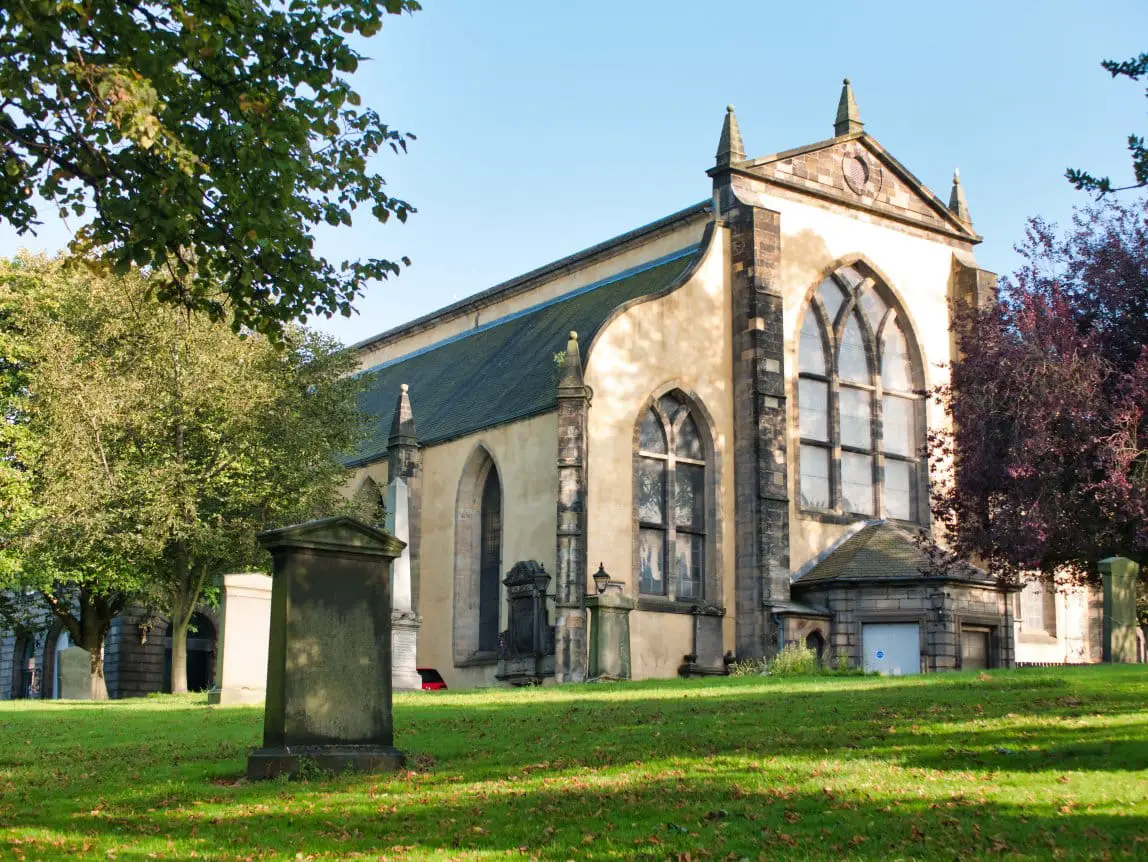
| Address: | 1 Greyfriars, Edinburgh, EH1 2QQ |
| Opening Hours: | Opening hours of the kirk vary throughout the year. Visit https://greyfriarskirk.com/ for details. The kirkyard is open 24 hours. |
| Admission Price: | Free entry |
| Parking: | No on-site parking. Paid car parking spaces in Chambers Street. |
| Contact: | 0131 2251900 contact@greyfriarskirk.com |
| Facilities: | Disabled access and toilets, shop, museum, guided tours |
| Photos: | Virtual Tour YouTube Video |
Overview
No visit to Edinburgh can be complete without a visit to Greyfriars Kirk, home of the famous Greyfriars Bobby – the Skye Terrier that kept a 14-year vigil on his master’s grave in the 19th century. Greyfriars has an interesting history that goes far beyond the legend of Bobby, and a visit to the kirk and its surrounding graveyard is a must-do for any visitor to the city.
The kirk (Scots word for church) is in one of Edinburgh’s main tourist attractions, located opposite the tower entrance of the National Museum of Scotland and just a few yards up from Candlemaker Row which leads onto the Grassmarket at the foot of Edinburgh Castle.
The site of Greyfriars isn’t particularly big but there are hundreds of gravestones to view (some of which inspired Harry Potter author J.K. Rowling), while the ochre-coloured kirk is worthy of a photo or two thanks to its interesting architecture.
You could spend a good hour wandering around the gravestones and the interior of the kirk on your own, or alternatively, you can join a guided tour which is the best option for anyone interested in the Old Town’s history. Guided tours are plentiful in Edinburgh so choose from any of the top-rated ones on the Get Your Guide website.
The Kirk’s association with Harry Potter and Bobby certainly makes it worth a visit for most people, but if history doesn’t interest you, you probably won’t spend much more than half an hour there.

The Highlights
1: Greyfriars Kirk, built in the 17th century, is renowned for its historical significance. This was the site where the National Covenant was signed in 1638, a significant moment in Scottish history. The church is also a final resting place for many notable figures, making it a fascinating place for history enthusiasts.
2: The kirkyard was the inspiration for J.K. Rowling and a certain boy wizard. If you have children you might like to get them to look around the gravestones to find the final resting places of the Potters, William McGonagall, and Tom Riddle.
3: The Kirk itself is an architectural marvel of Gothic design. The stained glass windows, dating back to the Victorian and Edwardian eras, are must-see features, as is the surrounding kirkyard with its atmospheric tombs and mausoleums.
Visiting Tips
1: If you’re interested in Greyfriars Bobby, don’t leave without snapping a selfie in front of the commemorative fountain outside the Kirk. Bobby’s grave, meanwhile, is located at the main entrance of the kirk.
2: An interesting feature of the kirkyard is one of the few remaining sections of the Flodden Wall which used to completely encircle the city. If you’d like to know more about it and other aspects of Edinburgh, pop over the road to visit the National Museum of Scotland.
3: After a bite to eat? Visit the Greyfriars pub next door or take a walk down Candlemaker Row to the Grassmarket where you’ll find lots of traditional Scottish pubs serving good quality food.
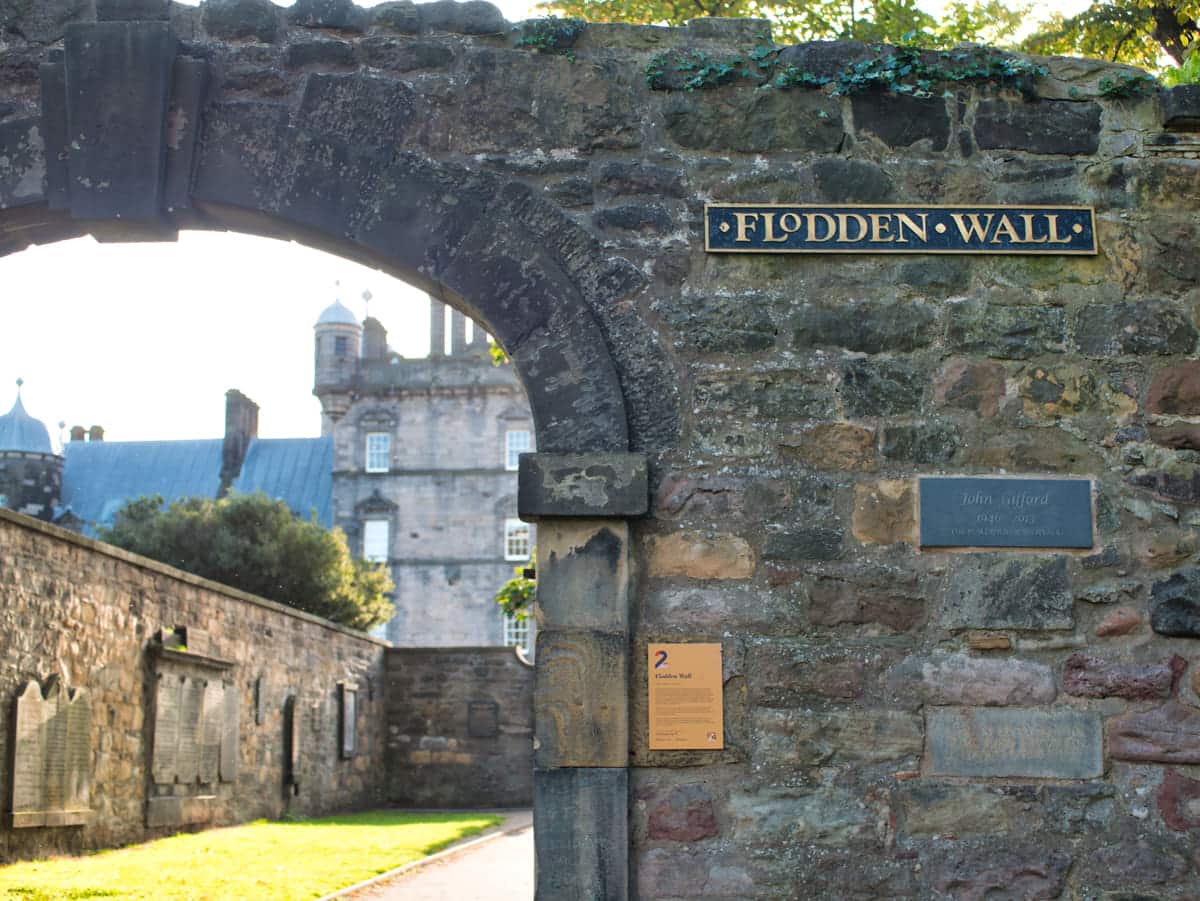
Tourist Information
While most people visit Greyfriars just for the kirkyard, I recommend taking a look inside the kirk itself. There’s a small museum in there that tells the story of Greyfriars from Franciscan times to the present day, and it includes one of a handful of original copies of the National Covenant which was signed in the Kirk in 1638. Be aware that you can only enter at times when no congregations or events are happening (i.e. Sunday mornings).
Many notable Edinburgh residents were buried in Greyfriars throughout its history including the Lord Advocate Sir George Mackenzie, the poet Duncan Ban MacIntyre, Admiral Sir Charles Douglas, and the artist Sir John Medina, amongst others.
While you look around the graves make sure you keep an eye open for one of the few remaining sections of the Flodden Wall as well as the ghost of Sir George Mackenzie. This ghostly figure is reputed to wander through the lonely graveyard late at night and legend has it that anyone who comes into contact with him will be left with cuts and bruises.
A slightly more modern claim to fame for the kirkyard is the fact that J.K. Rowling wrote the majority of the first Harry Potter book just around the corner at the Elephant House café. It’s widely known that the author used to wander around the gravestones looking for inspiration and you can find lots of names that appear in the books if you spend a little time looking for them. Here are a few to get you started:
- Anne and Robert Potter: From the entrance, walk along the path next to the kirk, turn right, and you’ll find a small yard. The grave is in the centre with a cross on the top.
- William McGonagall: Walk to the rear of the kirk and through the archway in the wall that is marked with the Flodden Wall plaque. At the far wall you’ll find the gravestone embedded a few feet above ground level.
- Thomas Riddell: This stone is located in the same area as the McGonagall grave. From the Flodden wall archway turn right and follow the wall almost to the end. The grave is located a few metres from the far wall.
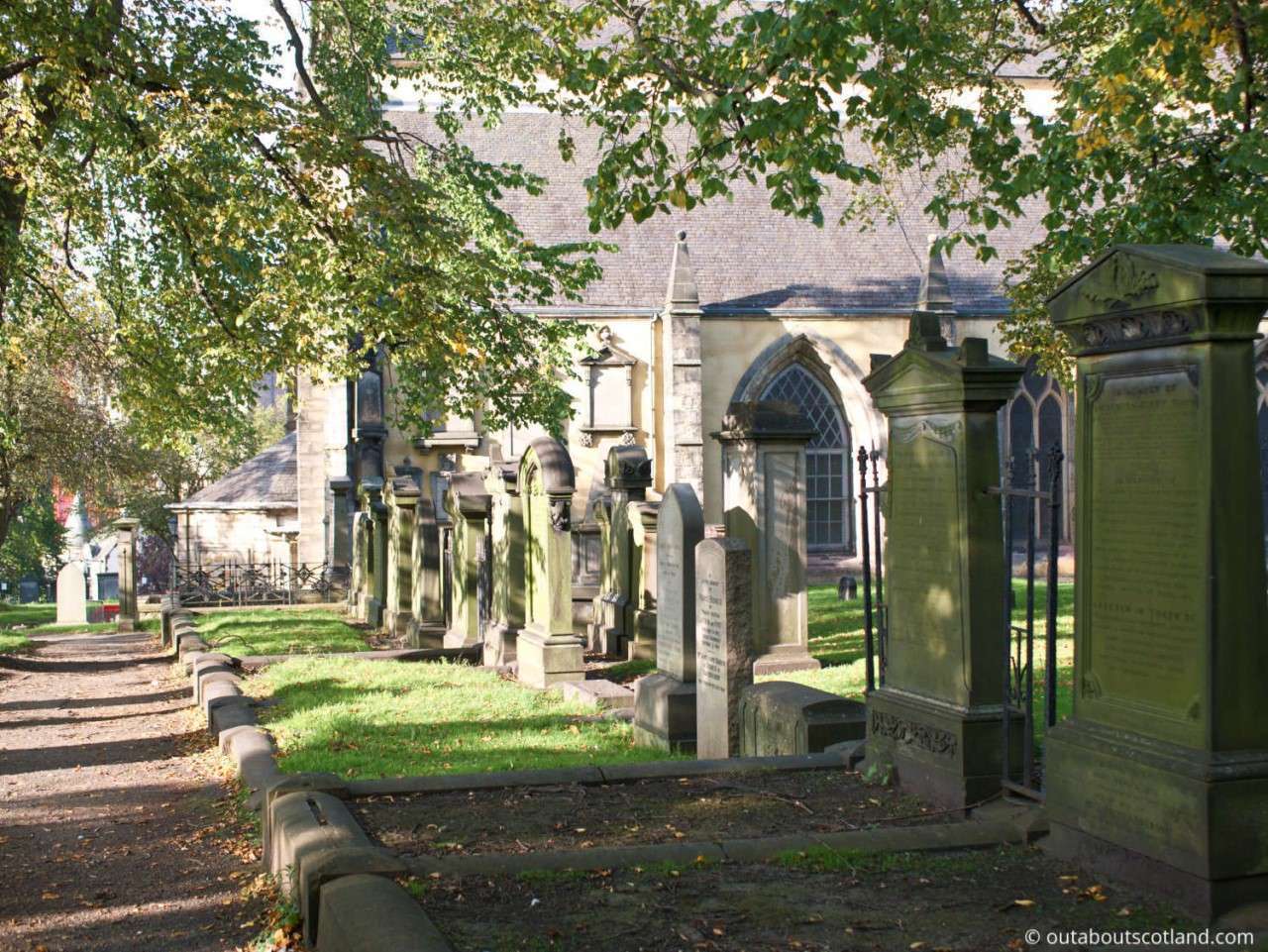
History
The site where the kirk and kirkyard are located was originally a Franciscan friary, however, due to the smell of the decaying bodies in Edinburgh’s cramped Old Town, the council decided that a new location was needed to bury them.
Building works started on the main section of the kirk in 1602 but it wasn’t until 1620 that it was finally completed, with the building that we see today undergoing significant changes in later years.
The most notable of these modifications was caused by the destruction of the west end of the kirk in 1718. The town council in their wisdom had decided to store the majority of the city’s gunpowder reserves inside a small building just outside the kirk. Unfortunately, it blew up and demolished a large section of the building which had to be rebuilt from the ground up.
A new dividing wall was also installed so that two separate congregations could worship at the same time, and the Old and New Greyfriars churches were kept this way for the next two hundred years. Further alterations occurred in 1845 when a fire raged through the kirk which completely destroyed its interior, hence most of the internal fittings we see today were installed after that date.
Finally, between 1932 and 1938 a programme of reconstruction began which included the installation of a new wooden ceiling and the removal of the old dividing wall.
As you explore the interior of Greyfriars Kirk, try to look for evidence of the 1845 fire on the sides of the easternmost windows and also take note of the church organ – the first to be installed in a Presbyterian church anywhere in Scotland.
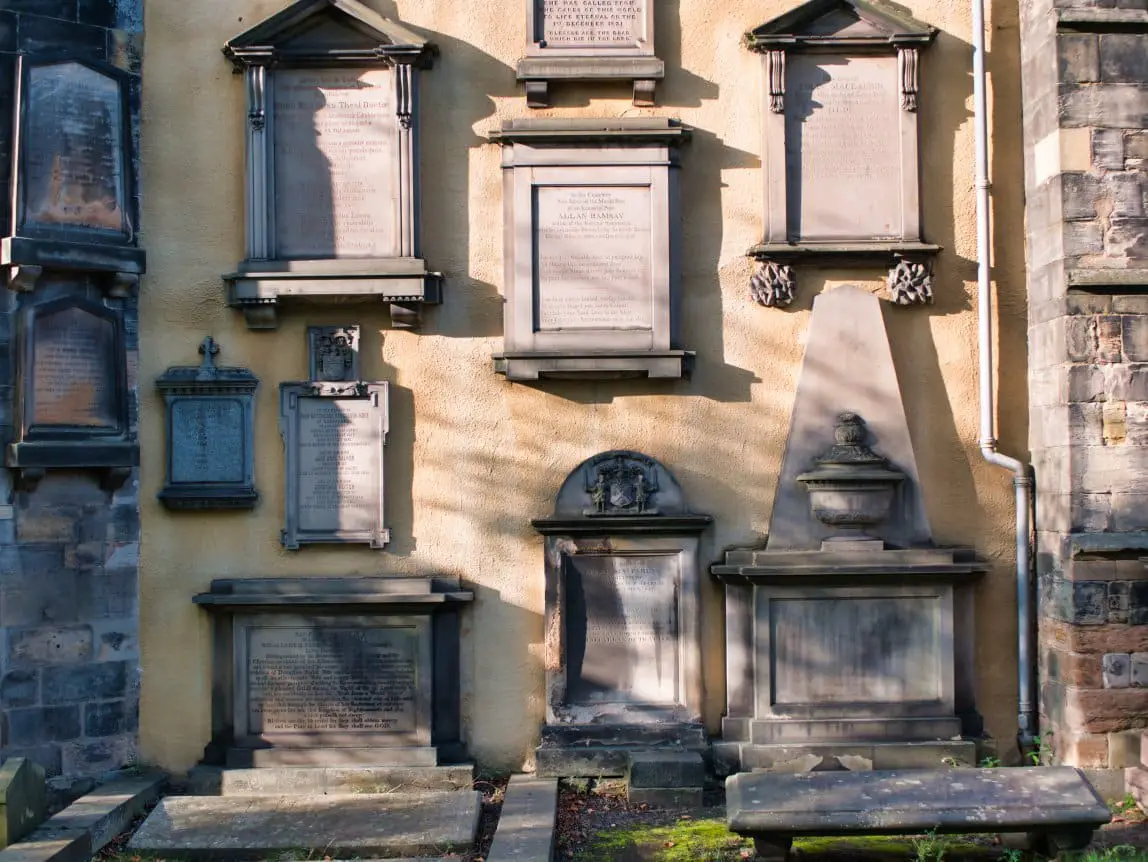
Things to Do
Greyfriars Kirk Tour: Immerse yourself in the history of Greyfriars Kirk. This is no ordinary tour; it’s a journey back in time. The guided tour offers detailed insights into the church’s dramatic past, from tales of the Covenanters to the intriguing symbols on some of the gravestones.
Exploring the Greyfriars Bobby Statue: Make sure to visit the statue of Edinburgh’s most famous dog, Greyfriars Bobby. The Skye Terrier is celebrated for his loyalty after standing guard over his master’s grave for 14 years, and he’s commemorated by a statue on top of a water fountain outside the kirk.
Greyfriars Kirkyard Ghost Tour: If you’re a fan of the supernatural, a nighttime tour of Greyfriars Kirkyard is an unmissable experience. Known as one of the most haunted graveyards in the world, it’s home to the notorious Mackenzie Poltergeist who is said to have left some sightseers with cuts and bruises.
Attending a Service: Greyfriars Kirk is still an active church and visitors are welcome to attend services throughout the year. Experience the spiritual side of Scotland with traditional hymns and sermons where the unique acoustics of the building ensure each service is a truly mesmerizing experience.
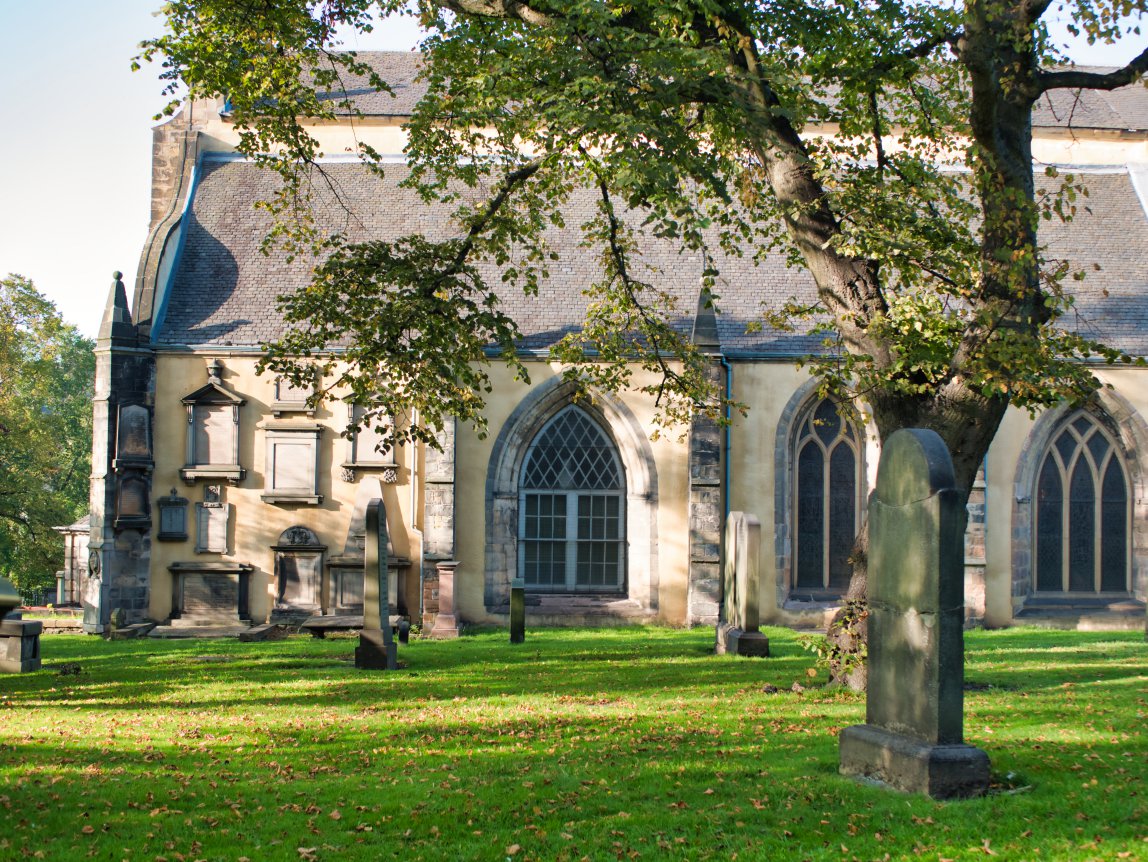
Things to Do Nearby
The Grassmarket. Edinburgh EH1 2HJ. 4-minute walk.
A historic site in Edinburgh that was originally the city’s main cattle market. It slowly evolved into a courtyard city square with several traditional pubs that offer outside dining. The photogenic West Bow and Victoria Street are to the north while Greyfriars is to the south.
National Museum of Scotland. Chambers St, Edinburgh EH1 1JF. 1-minute walk.
The largest museum in Scotland. It’s split into two main sections – the restored Victorian Grand Gallery and the modern section that includes science, archaeology, natural history, design and world culture galleries. There are frequent temporary paid exhibitions throughout the year and the museum also houses shops, a café and a restaurant.
The Meadows. Melville Dr, Edinburgh EH9 1ND. 8-minute walk.
A large public park that is very popular with Edinburgh’s residents and the university community. The Meadows comes alive in August during The Fringe when there are theatre and circus shows staged in the park.
Edinburgh Vaults. South Bridge, Edinburgh EH1 1QR. 7-minute walk.
Underground chambers with a ghostly history. Guided tours take visitors through the subterranean rooms while explaining the story of Edinburgh and the people who lived there over the last 500 years.
St. Giles Cathedral. High St, Edinburgh EH1 1RE. 7-minute walk.
A grand Gothic-style medieval cathedral also known as ‘The High Kirk’, it was the place of worship where John Knox preached. Free to visit and guided tours are available. There is a shop and café on-site and many more within a short walking distance on The Royal Mile.
Frequently Asked Questions
How do I get to Greyfriars Kirk?
Greyfriars Kirk is located at the junction of Candlemaker Row and George IV Bridge, opposite the National Museum of Scotland. The nearest on-street parking is on Chambers Street.
Address: 1 Greyfriars, Edinburgh, EH1 2QQ.
Are dogs allowed in Greyfriars Kirk?
Dogs are not allowed in Greyfriars Kirkyard.
Who is buried in Greyfriars?
The most famous burials in Greyfriars Kirkyard are Greyfriars Bobby and his owner John Gray. Bobby’s gravestone is located at the entrance of the kirkyard adjacent to George IV Bridge.
Other notable burials include architect John Adam, William McGonagall (regarded as one of the worst poets in Scotland!), and Tom Riddle (the inspiration for Tom Riddle/Voldemort in Harry Potter).
How many people are buried at Greyfriars Kirk?
Between 1562 (when Mary Queen of Scots established Greyfriars as a burial ground) and 1900, nearly 100,000 people were buried in Greyfriars Kirkyard.

